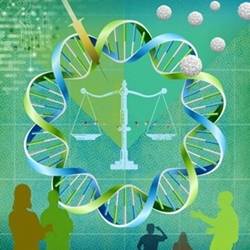Aarsh Shah, BA, MS2, Touro College of Osteopathic Medicine, and Priya Dave, BA, MS4 Icahn School of Medicine at Mount Sinai and MBE Candidate at Harvard Medical School
Artificial Intelligence: Ethical Considerations for Future Radiologists

 Aarsh Shah, BA |
 Priya Dave, BA |
As a third-year medical student on emergency radiology rotation, it was fascinating to learn that there is a new artificial intelligence software reading studies independently and providing a second opinion. I had heard about artificial intelligence, but I never directly interfaced with it. The AI software felt like an invisible companion, providing a much-welcomed second opinion. Most of us envision a future in which AI will increase the efficiency of radiology practices and provide us with a second set of eyes. As AI integrates into radiology, the work of bioethics becomes increasingly important. I like to think of bioethics as providing the “fertilizer” for AI, ensuring that it develops into the tool we would like to use in the future. The work of bioethics can use all of us, and we can each contribute our own unique life experiences and moral reasoning in foreseeing the risks and benefits of AI.
The ethical principle of “justice” states that healthcare should be distributed equitably and fairly. This comes to the forefront when discussing the integrity of the AI algorithms we are using. It is critical to ask questions such as “are the datasets being used to program the algorithms diverse enough?” Disease may present at different stages based on gender, socio-economic factors and geography, particularly due to barriers to accessing healthcare and differences in treatment availability1. It is important to consider which algorithms are used in the design of AI software — to ensure that the tool provides equitable reads to all populations. Another ethical consideration centers on who is programming the AI. What are their moral values, and would they align with ours? Would they program the AI to be more sensitive or specific than we would like? Many of these questions have no single answer but are still important to consider.
How much trust will radiologists instill in AI? Automation bias is the concept that providers might instill more trust in AI than they do in their own reads2. While AI has the potential to diagnose the “what” and the “where” of a given pathology, the “why” of a diagnosis requires the radiologist’s intuition3. Radiologists will ultimately continue to be held accountable for patient care, so the ethical question, to what degree should machines be held accountable to and liable, should be considered. As AI becomes mainstream, it will be important to recognize this, so that we do not become over reliant on the technology.
In conclusion, AI in radiology has the potential to make the field more efficient, and as it becomes mainstream, we should work to ensure that it is a dependable and unbiased tool. AI could greatly benefit from the diverse perspectives of future radiologists in identifying and speaking out about ethical considerations. Each of our moral reasoning processes is unique — and we all contribute and help provide the “fertilizer” to ensure that the tool develops into a helpful resource for us all.

- Geis JR, Brady AP, Wu CC, et al. Ethics of artificial intelligence in radiology: summary of the joint European and North American multisociety statement. Canadian Association of Radiologists Journal 2019;70:329-334.
- Strauß S. Deep Automation Bias: How to Tackle a Wicked Problem of AI? Big Data and Cognitive Computing 2021;5:18.
- Baselli G, Codari M, Sardanelli F. Opening the black box of machine learning in radiology: can the proximity of annotated cases be a way? European radiology experimental 2020;4:1-7.